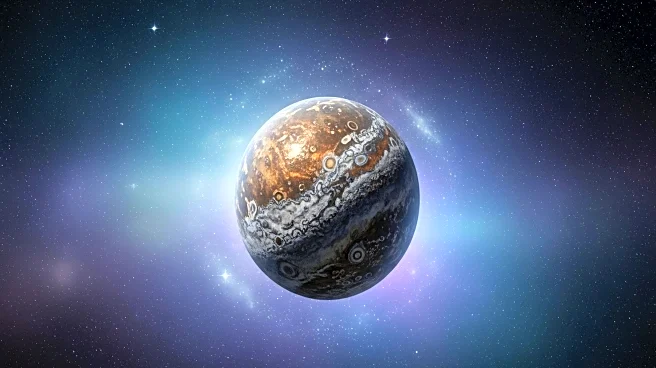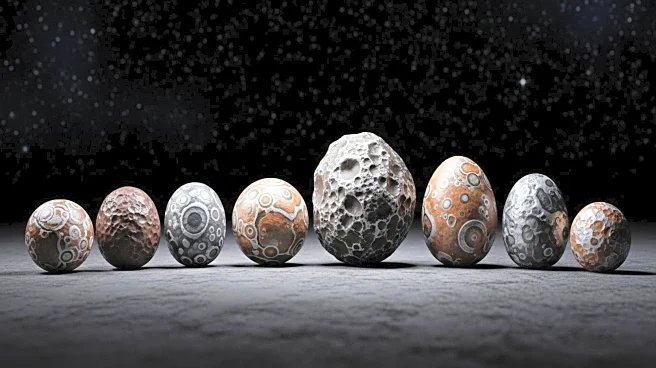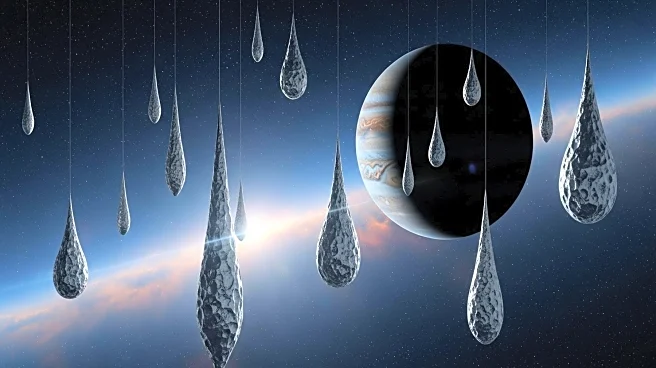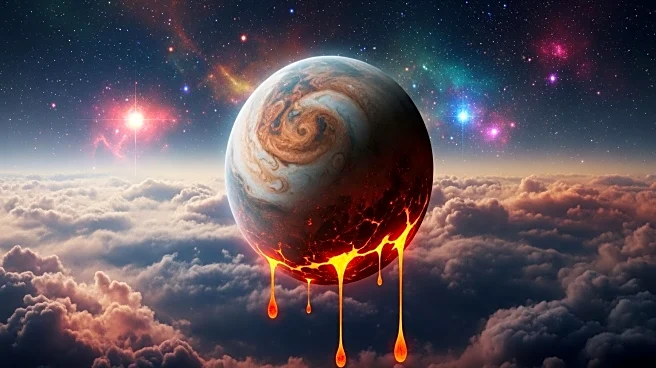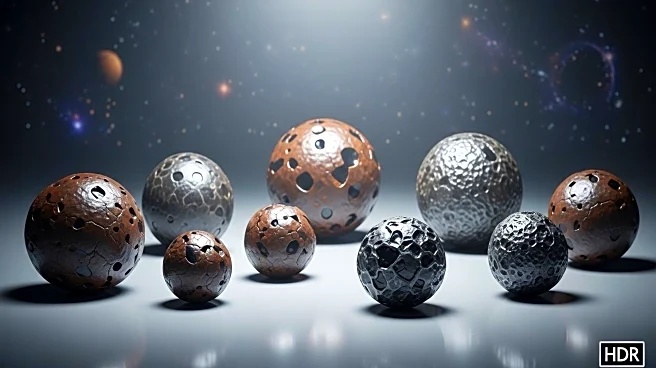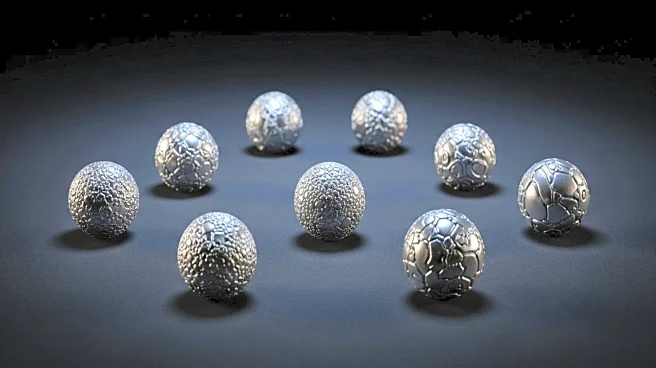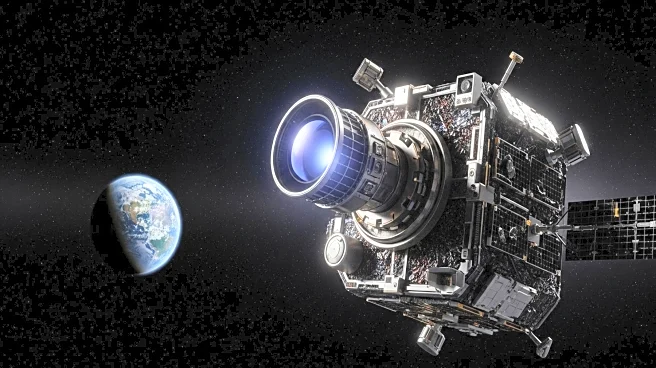What's Happening?
Researchers from Nagoya University in Japan and the Italian National Institute for Astrophysics have utilized mysterious spherical droplets found in meteorites, known as chondrules, to date the formation of Jupiter. These chondrules are tiny molten rock droplets found in chondrite meteorites. The study reveals that these droplets were formed from high-speed collisions between planetesimals, small rocky and icy bodies, in the early solar system. The gravitational influence of Jupiter, during its rapid growth, caused these collisions, leading to the creation of chondrules. The research, published in Scientific Reports, suggests that Jupiter's formation occurred approximately 4.6 billion years ago, coinciding with the peak production of chondrules.
Why It's Important?
This discovery provides significant insights into the early solar system's dynamics and the formation of gas giants like Jupiter. Understanding Jupiter's formation timeline helps scientists piece together the history of our solar system and the processes that led to the creation of other planets. The study's findings could influence future research on planetary formation and the conditions necessary for such processes. By pinpointing Jupiter's age, researchers can better understand the sequence of events that shaped the solar system, potentially impacting theories about the formation of other celestial bodies, including Earth.
What's Next?
The research team plans to explore the formation of other chondrules with different ages, which may have been influenced by the formation of other planets like Saturn. This ongoing research could further refine our understanding of planetary formation and the early solar system. The study opens avenues for more detailed investigations into the role of other gas giants in shaping the solar system's structure and composition.
Beyond the Headlines
The study highlights the intricate interplay between planetary formation and the solar system's evolution. It underscores the importance of interdisciplinary research, combining astrophysics and geology, to unravel cosmic mysteries. The findings also emphasize the role of advanced computer modeling in simulating early solar system conditions, offering a glimpse into the complex processes that govern planetary formation.
